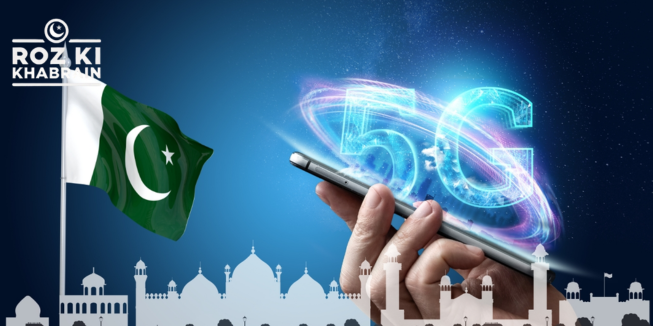Across Pakistan, a significant shift toward solar energy is underway, with increasing adoption of solar installations across residential, commercial, and industrial sectors. Driven by declining costs and the promise of energy independence, this solar boom is transforming the nation’s energy landscape. However, this transition is also revealing a concerning divide.
For those unable to afford the upfront costs of solar systems, reliance on the grid is becoming more expensive. With the responsibility for grid maintenance falling primarily on grid-dependent consumers, Pakistan is facing an energy crisis that could deepen economic inequalities.
Under the current net-metering policy, individuals who invest in solar—whether for their homes, businesses, or industries—enjoy substantial savings. By generating their own electricity and selling excess power back to the grid, they can reduce or eliminate their utility bills. However, this system creates a critical imbalance. Consumers who remain dependent on the grid, many already struggling with high energy costs, are bearing an increasing share of the expenses necessary to maintain and stabilize the grid.
At a recent seminar hosted by the Institute of Policy Studies, titled Navigating the Solar Surge: Ensuring Equitable Energy Access in Pakistan’s Power Sector, experts stressed the need to address these disparities. As solar adoption continues to rise, the fixed costs of maintaining the grid—including transmission, distribution, and voltage control—are being shifted onto those who cannot afford to generate their own power. For low- and middle-income households, small businesses, and underserved communities, these rising costs are already a heavy burden.
“Those who rely on the grid are effectively paying more to maintain it, while solar adopters contribute less,” said Khalid Rehman, Chairman of the Institute of Policy Studies. “Without adjustments, we are heading towards an energy system that could make electricity unaffordable for millions.”
The financial strain on grid-dependent consumers is becoming more evident, particularly amid rising energy tariffs. With inflation on the rise, families face difficult choices between basic living expenses and their monthly energy bills. Those reliant on the grid are now covering an increasing share of the infrastructure and operational costs that solar users avoid. This leaves many low-income households and small businesses facing energy poverty, where even basic power becomes unaffordable.
In addition to financial concerns, the shift to solar is also challenging Pakistan’s power infrastructure, which was designed for centralized, grid-based generation. The influx of distributed solar systems is creating operational issues, especially in managing fluctuating energy flows, known as the “duck curve.” During daylight hours, solar power reduces grid demand; however, after sunset, demand spikes as solar generation decreases. This fluctuation necessitates immediate action to adopt better pricing mechanisms for daytime grid demand and manage economic challenges. There are several technical solutions available, from advanced dispatch schedules to flexible ramping products, that can help the system operator maintain grid stability.
Countries that are leaders in renewable energy, such as Germany, Australia, and the United States, have tackled similar challenges by implementing policy reforms that ensure fair renewable adoption. For example, switching from net metering to “net billing” ensures that solar exports are credited at a rate that reflects actual grid costs, rather than unfairly subsidizing one group of consumers over another. Other measures, like minimum monthly fees and demand charges, help spread costs more evenly, ensuring that all users contribute to grid maintenance.
However, Pakistan has been slow to adapt, leaving grid-dependent consumers with few protections as solar adoption increases. If current policies remain unchanged, the growing imbalance will only deepen, putting the country’s most vulnerable consumers at risk of being left behind.
The path forward is clear for policymakers. As Abu Bakar, Head of Energy and Sustainability at Amreli Steels, noted at the seminar, Pakistan’s energy transition cannot afford to leave grid-dependent consumers behind. He emphasized that for the transition to be sustainable, it must benefit everyone, not just those who can afford to install solar systems.
Creating a fair and resilient energy future for Pakistan means ensuring that grid-dependent consumers are not burdened with the costs of an unbalanced system. This will require policy reforms that shield these consumers from undue financial strain, while also fostering the growth of solar. By reevaluating net metering policies, incentivizing investments in grid-stabilizing technologies, and implementing fair cost-sharing measures, Pakistan can create an energy system that is both sustainable and equitable.
As the country progresses toward a cleaner energy future, the benefits of solar should extend to all, not just those who can afford the shift. A just energy transition will require thoughtful, inclusive policy measures that balance solar’s potential with the needs of those still reliant on traditional energy sources. Options for addressing this could include linking buy-back rates to a floating percentage of energy purchase prices, imposing fixed charges to counter the cost shift on grid consumers, and overhauling incentive programs with exit clauses and caps. The key is not reinventing the wheel, but ensuring swift action by policymakers to facilitate a just transition for all.
Mr. Muhammad Wali Farooqi is an energy economist specializing in optimizing global energy systems, with a focus on carbon policies to mitigate emissions. He advocates for circular economy principles, waste reduction, and sustainability, and is committed to addressing climate change through pragmatic solutions. He currently serves as a Research Officer at the Institute of Policy Studies, Islamabad.




